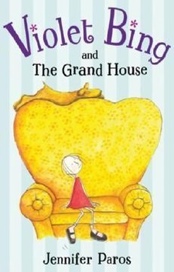Pain Is an Opinion: On Danger, Safety, and Being Seen
Jennifer Paros
“People go through so much pain trying to avoid pain.”
I was watching The Tonight Show, and Jimmy Fallon was playing a game in which he and his guest took turns reaching inside a box through slots. The box had one open side that faced the audience so everyone knew its contents except the one playing. As the game began, instinctively the participants’ minds went on the lookout for evidence of danger, attempting to keep themselves safe. Whenever they came in contact with the unknown objects (Peeps marshmallow bunnies, cinnamon rolls, earthworms, a frog), they overreacted and jumped back, certain it was something undesirable. The game was fun to watch, but in day-to-day life, the process of negatively projecting, avoiding the unknown, and fearing what might happen is tiring at best, crippling at worst. When our internal stories are about possible threats, then taking another step, going forward with a project, relationship, or a move of any kind can be frightening, even painful – because expectation and projection affect us so greatly.
In an article I read on pain science, the author included documentation of a builder who had jumped down onto a 15 centimeters-long nail. Any movement of his foot was so painful, that in order to be treated he had to be completely sedated. Once tended, they found the nail had not entered his foot at all; it had gone between his toes. His foot was completely unharmed. But he had been in excruciating pain. The pain was real, but it was also incorrectly informed.
Pain is a construct of the brain. Neuroscientist Vilayanur Ramachandran said, “Pain is an opinion on the organism’s state of health rather than a mere reflective response to an injury.” The idea that pain is an opinion – the brain’s assessment as to whether or not we’re in danger – applies not just to our physical experience but to our emotional lives as well.
When I started art school, a painting of mine was selected for a juried show. I was extremely pleased and scared. On the day of the show, as I anxiously hung my piece, my back got tweaked. For many months to come, I had debilitating back pain. I was seeing a chiropractor twice a week, but couldn’t seem to turn the corner on the pain or the instability. Desperate, I asked if there were anything else I could do. My chiropractor suggested aerobics; I complained that all movement hurt. She then introduced me to the idea that some pain is okay, that it’s not all indicative of danger. I took this as permission to stop fearing the pain and avoiding whatever I thought might in any way exacerbate it. With this new perception, I was able to get better. During this time, I also found a book entitled, Full Catastrophe Living that guided me to start taking responsibility for the ways in which I was scaring myself, overdramatizing life, and making things seem dangerous when they were not.
“Risk being seen in all of your glory.”
There is no actual danger in painting a picture, hanging it on a wall, and allowing others to see it. When we speak of the vulnerability of the artist and “putting ourselves out there”, we’re not doing ourselves any favors. We’re frightening ourselves, stimulating a danger response, and tipping over a chain of dominoes that would be best left standing. We’re making it harder for us to work, harder for us to share, and ultimately, harder for us to thrive.
We all prefer it when others appreciate us and our work, but making their response important to our well-being means we must perceive the acts of sharing and being seen as somehow dangerous or risky. Meanwhile, our physical, mental, and emotional systems are listening, taking this perception as a truth to which they must respond. As science and common sense tells us, this is a road to pain. The perception that we need to protect ourselves can become distorted and incorrectly informed. And just like the man who believed a nail had gone through his foot and therefore had the appropriate pain response, we can also hold beliefs that are causing us pain when no real harm has or will come to us.
In our physical bodies pain is not always a sign of damage or danger. The same goes for emotional pain. Though rejection and criticism are real, our opinion is what actually creates how we feel. The world, even with all its uncertainty and unknowns, never accounts for more of our experience than we do.
Jennifer Paros is a writer, illustrator, and author of Violet Bing and the Grand House (Viking, 2007). She lives in Seattle. Please visit her website.

